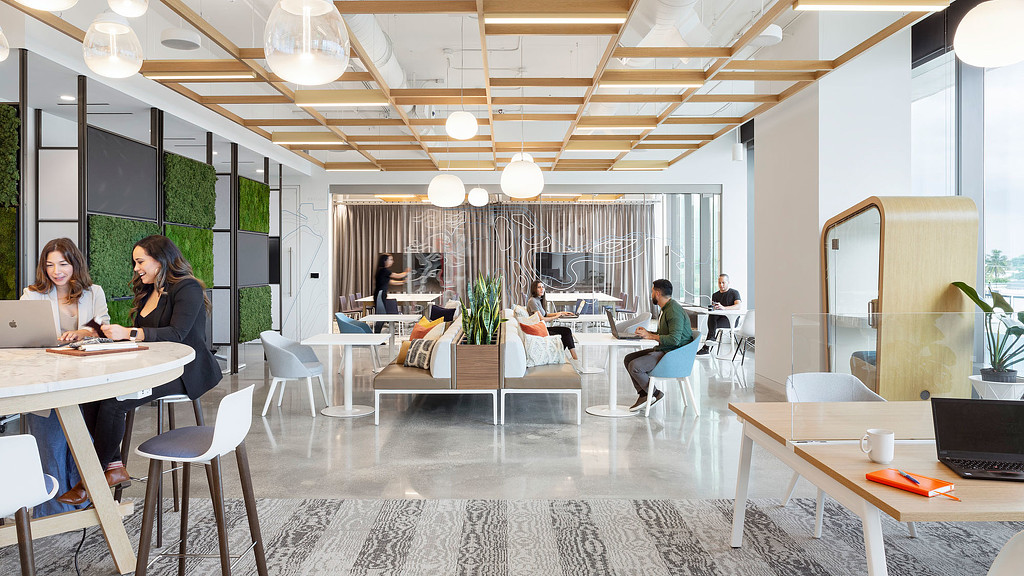Here’s Why Employees at Top-Performing Companies Need the Office
September 14, 2021 | By Janet Pogue McLaurin
In Gensler’s global workplace surveys over the last year, “working in-person with my team/colleagues” was ranked the number one reason to come to the office. That’s still true, but it’s far more nuanced than that. Our latest research reveals that top performing companies value the office for more than just collaboration. We uncovered a wide range of work activities people prefer to do in the office — both individual work and working with others.
Employees at top-performing companies see a wider range of places as ideal.
According to our U.S. Workplace Survey 2021 research, workers at top-performing companies prefer the office for a much wider range of activities than workers at unranked companies, including deep concentration, ideation, and creative tasks. Top-performing companies’ employees are nearly twice as likely to prefer the office for individual thinking/ideation. They also prioritize in-person work over virtual work, in particular for giving and receiving in-person feedback. For individual reflection or conceptual tasks, however, they are more likely to prefer a wider variety of places — both in and out of the office. (In this study, we define top-performing companies as organizations that have recently been ranked on a Most Admired, Best Places to Work, and Most Innovative Companies list.)
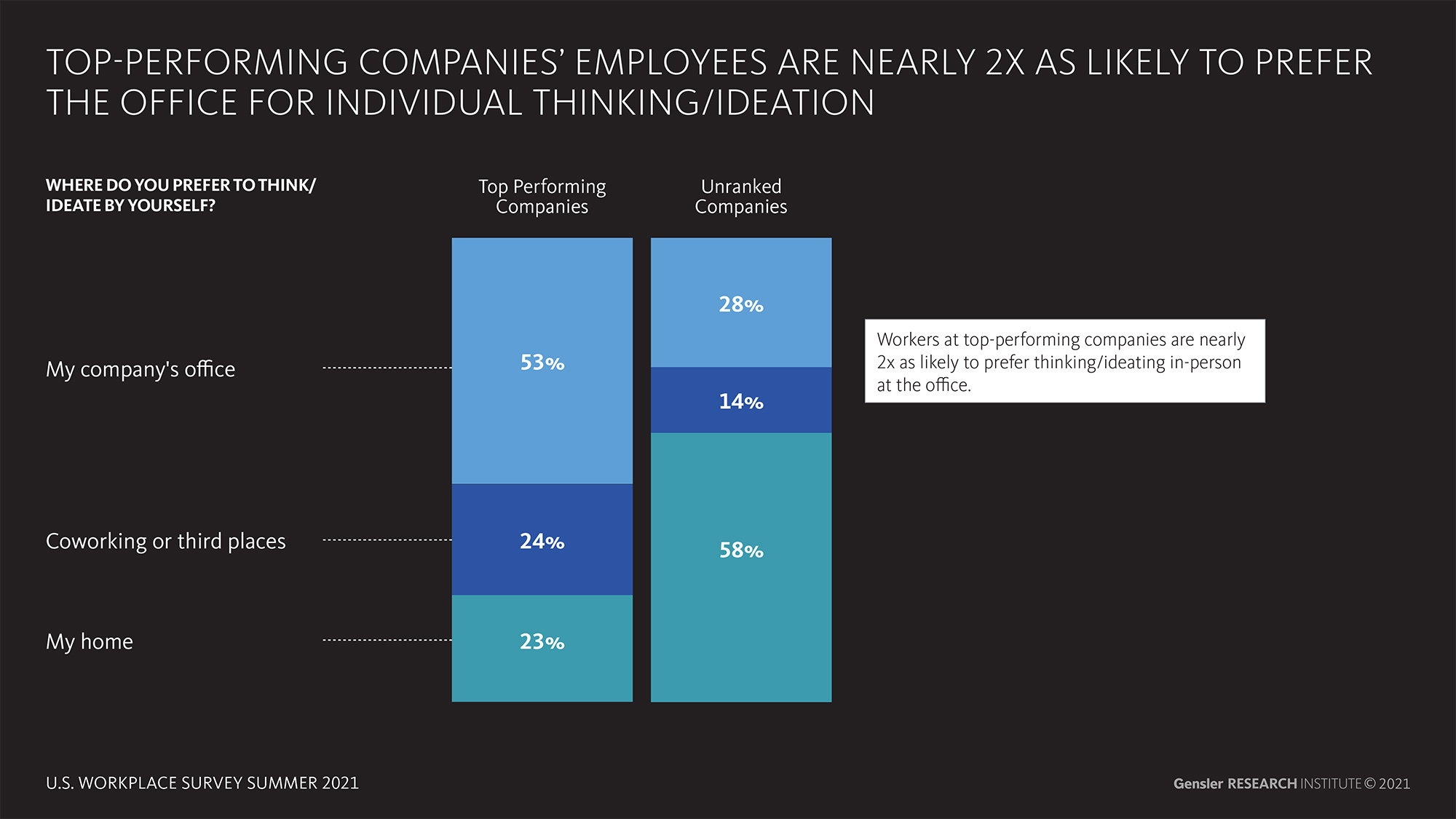
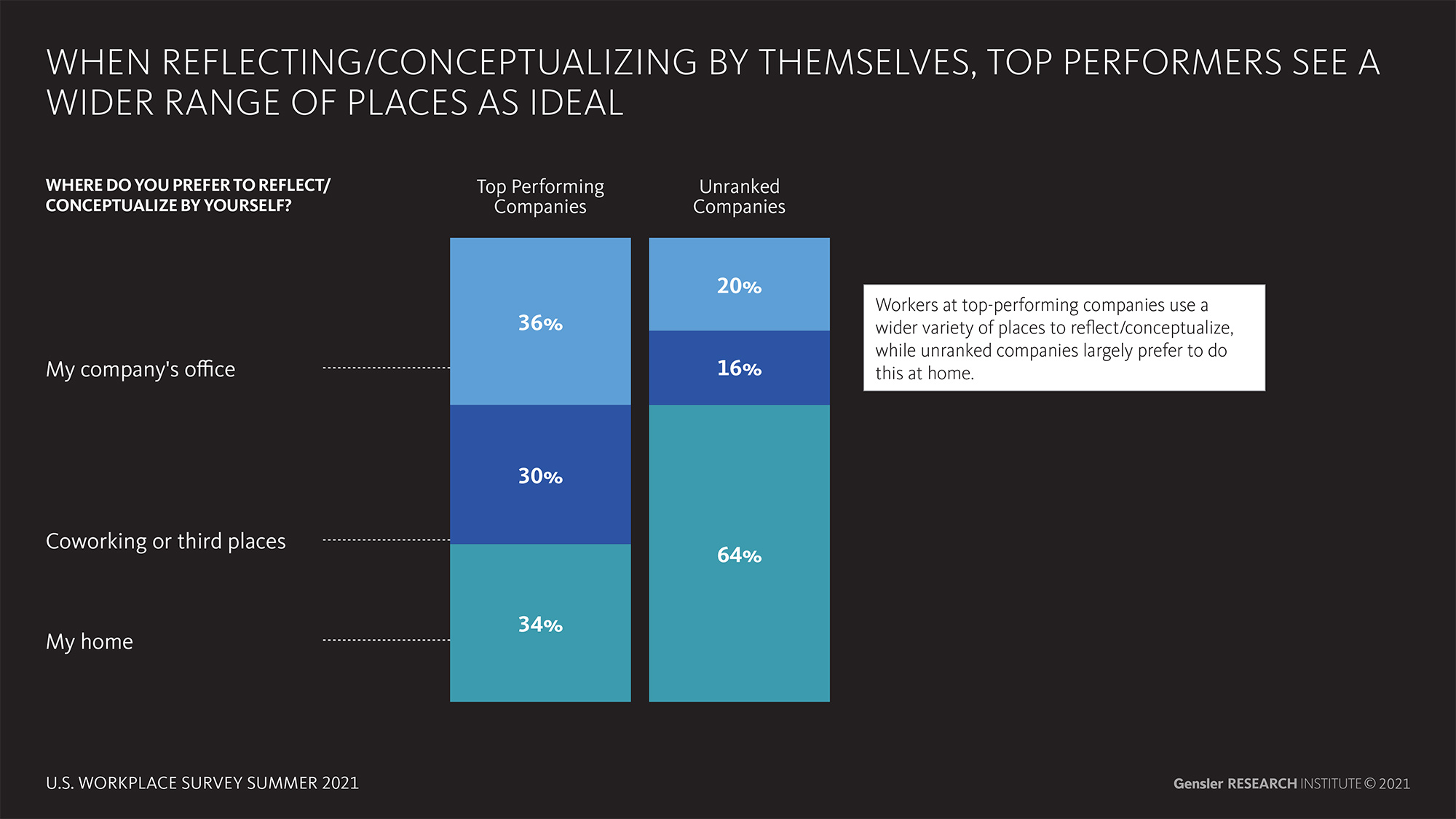
For top-performing companies, third places are becoming a crucial component of the workplace ecosystem.
Top-performers expect to rely more on the office and third places, such as coffee shops, libraries, and coworking spaces, for deep focus work in the future. What’s more, workers at top-performing companies are twice as likely to prefer to receive feedback on project work in-person in third places. Top-performers are also generally less interested in working from home, and express a greater interest in working from third places for many tasks as part of their normal work weeks. As cities reopen, this preference for work settings, both in and out of the office, may provide new urban planning and design opportunities post-pandemic. Neighborhood amenities, including third places and outdoor spaces, will play a greater role in building selection for corporate leasing or for office building design or corporate campus planning in the future.
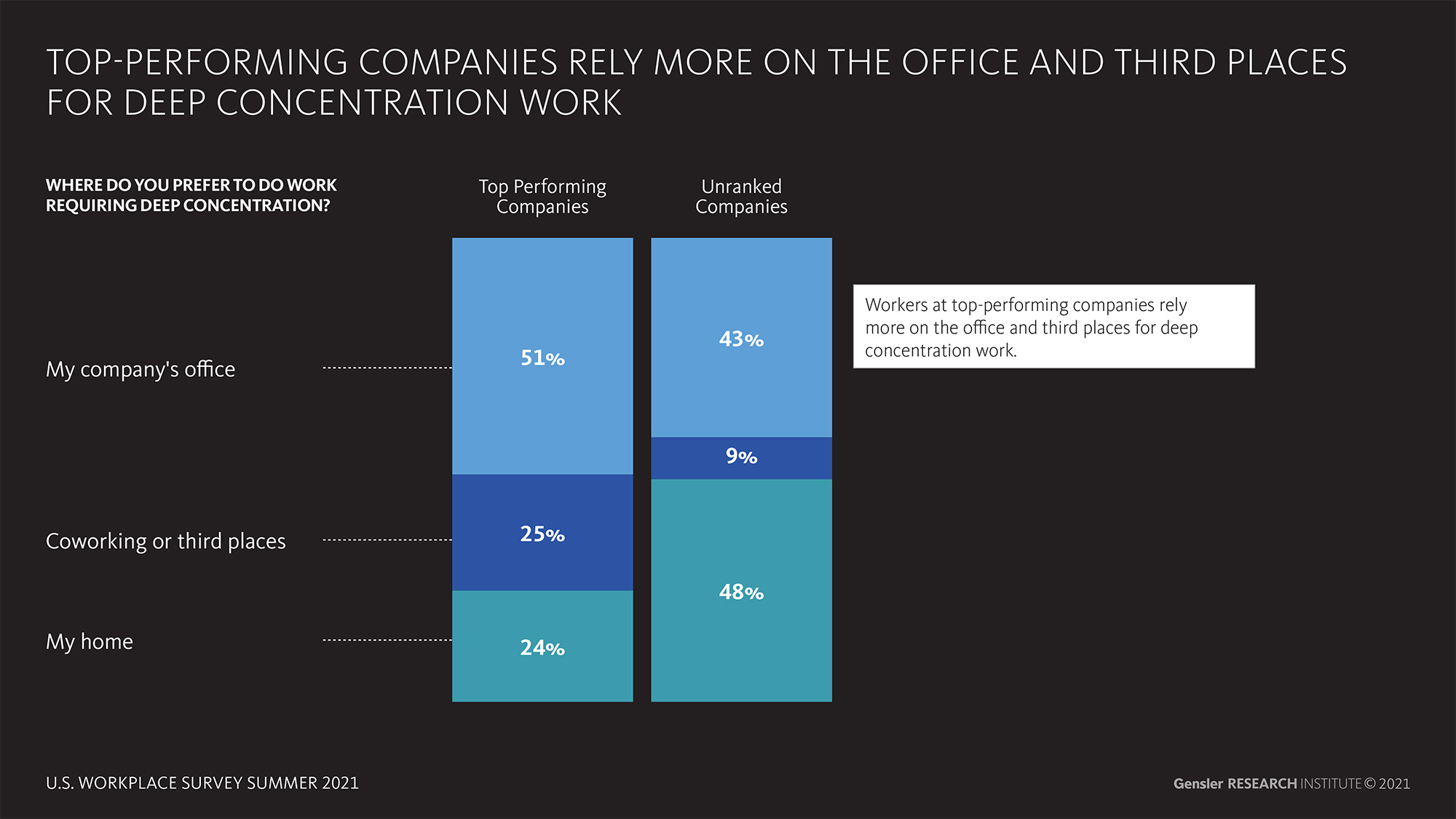
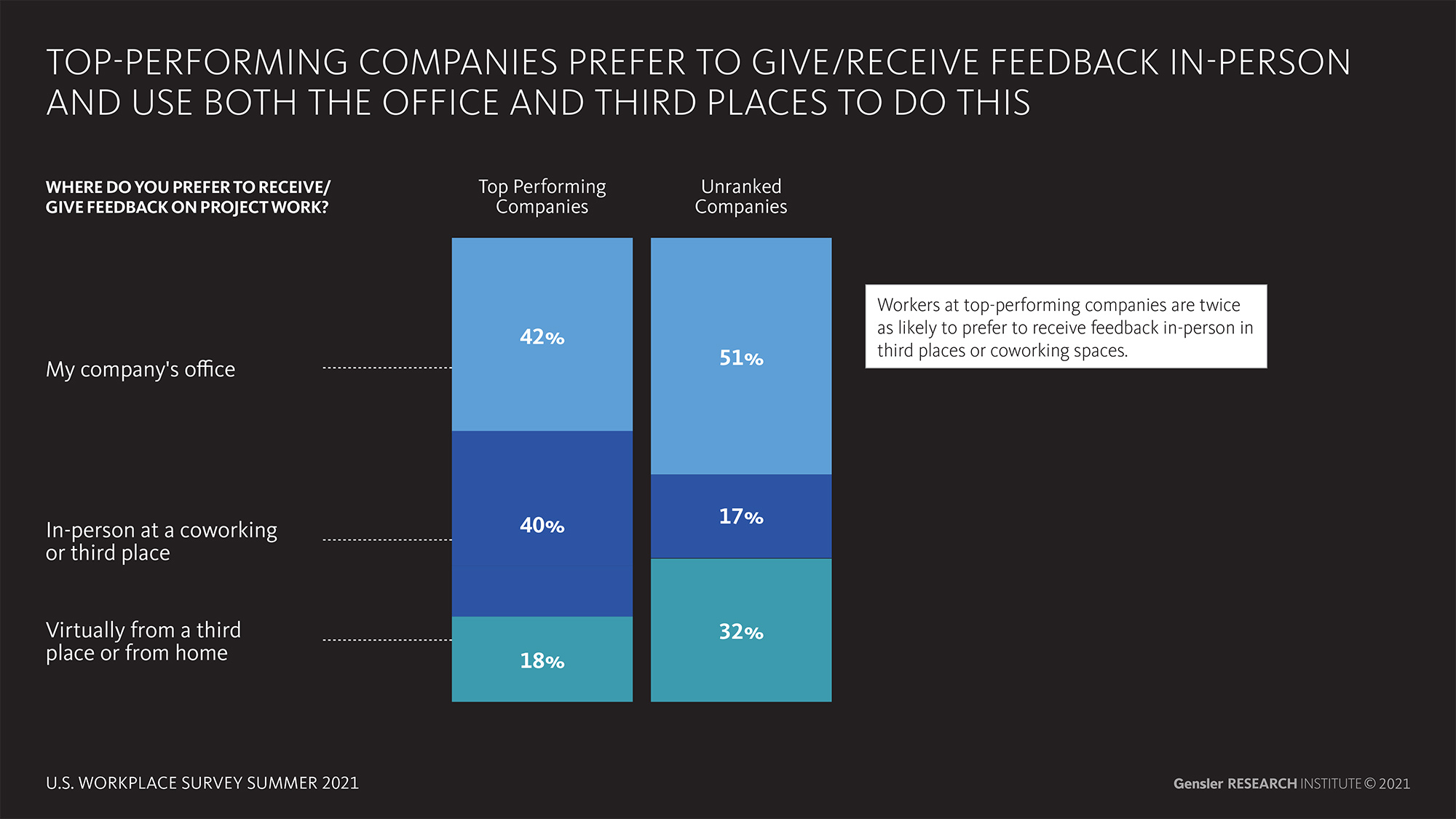
The workplace remains the preferred location for most work activities.
The office is not just about working in-person with colleagues. For every work task other than reading, employees at top-performing companies prefer working from their company’s office over other locations. Creative work like brainstorming and ideation — both collaborative and individual — are the activities employees at top-performing companies report the greatest preference for working from office environments, followed by a mix of individual and collaborative tasks, including deep concentration.
Here’s a look at locations where employees in top-performing companies prefer for each work activity:
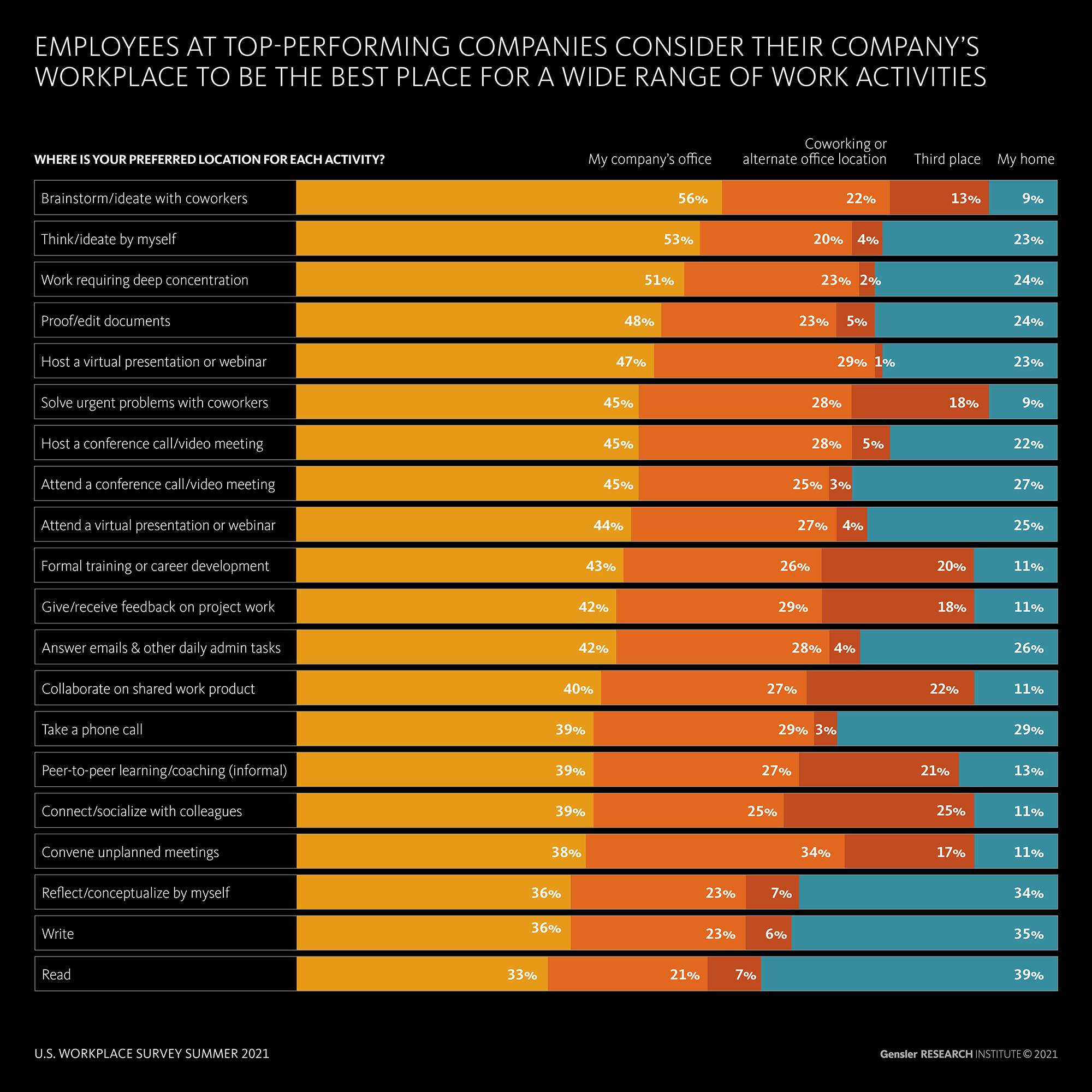
Leaders as well as employees at top-performing companies show a similar preference for flexibility and a mix of in-office and remote work — but the specific behaviors they prefer doing at the office illustrate how these organizations understand the physical workplace as a crucial tool to drive creativity and innovation.
Top-performing companies support flexibility and encourage remote work, but they also value the role of the physical workplace to bring their talent together to achieve great results. Top-performers flourish in effective work environments that support their mind’s best work, but they also need a great work experience — one that captures their heart and soul. The best companies provide a great physical place and experience that can’t be provided remotely to encourage their people to want to be there. To compete in a war for talent, the top-performing companies of the future will support an ecosystem of workspaces — both in and out of the office — where their talent can thrive and realize their full potential.
For media inquiries, email .
